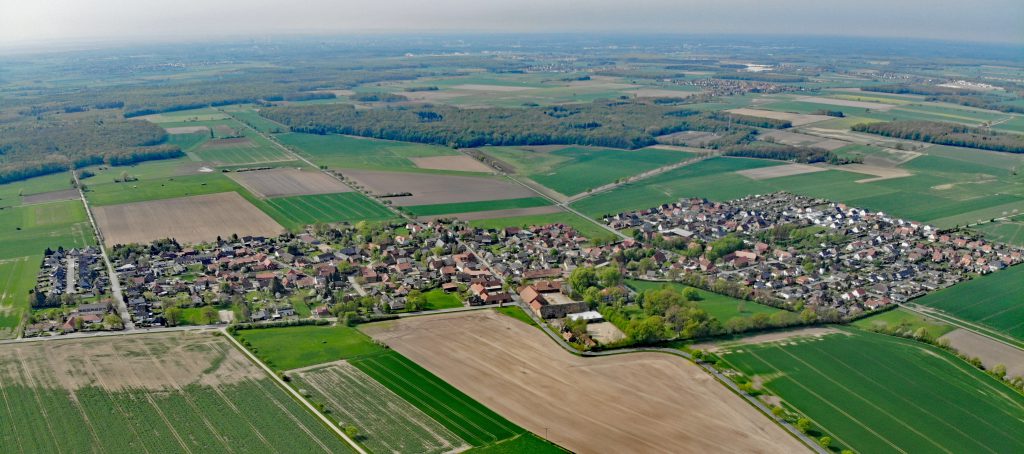Essenrode
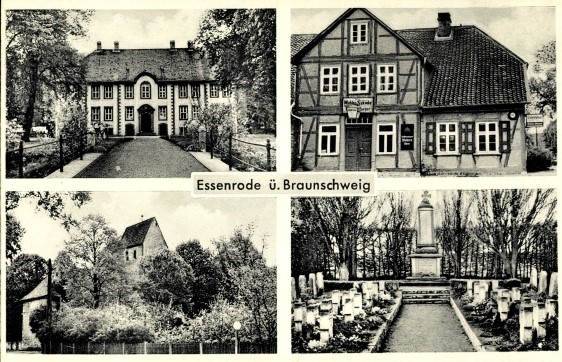
The year 1945 has left a special mark on Essenrode. With the end of the war, refugees and displaced persons from Pomerania, West and East Prussia, Silesia, the Sudetenland, Wartheland, Bessarabia, the Baltic States, Galicia and other regions of the former Eastern territories came to the village.
In the following years, people from the Soviet-occupied part of Germany and later the GDR also fled to Essenrode.
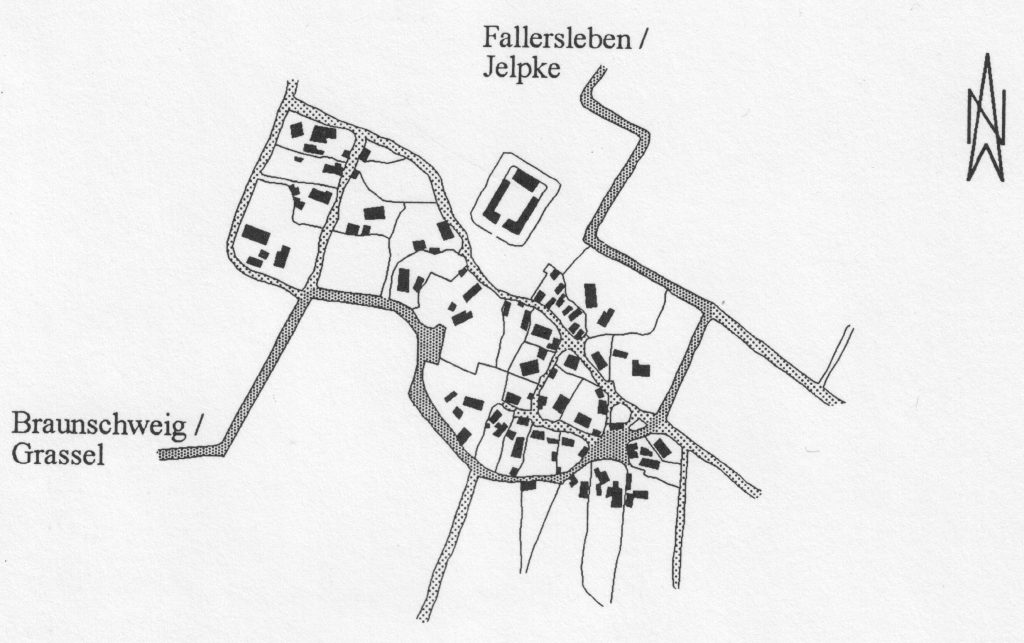
The small village of Essenrode almost doubles its population by taking in refugees and displaced persons. On October 1, 1928, Essenrode has a total population of 558. The number of inhabitants remains below 550 until 1945. In 1937, for example, the population is 518. In 1946 Essenrode has 973 inhabitants.
Source:.https://de.wikipedia.org/wiki/Essenrode#cite_note-gesch-3;
retrieved 21.02.2020, 11:10 a.m.
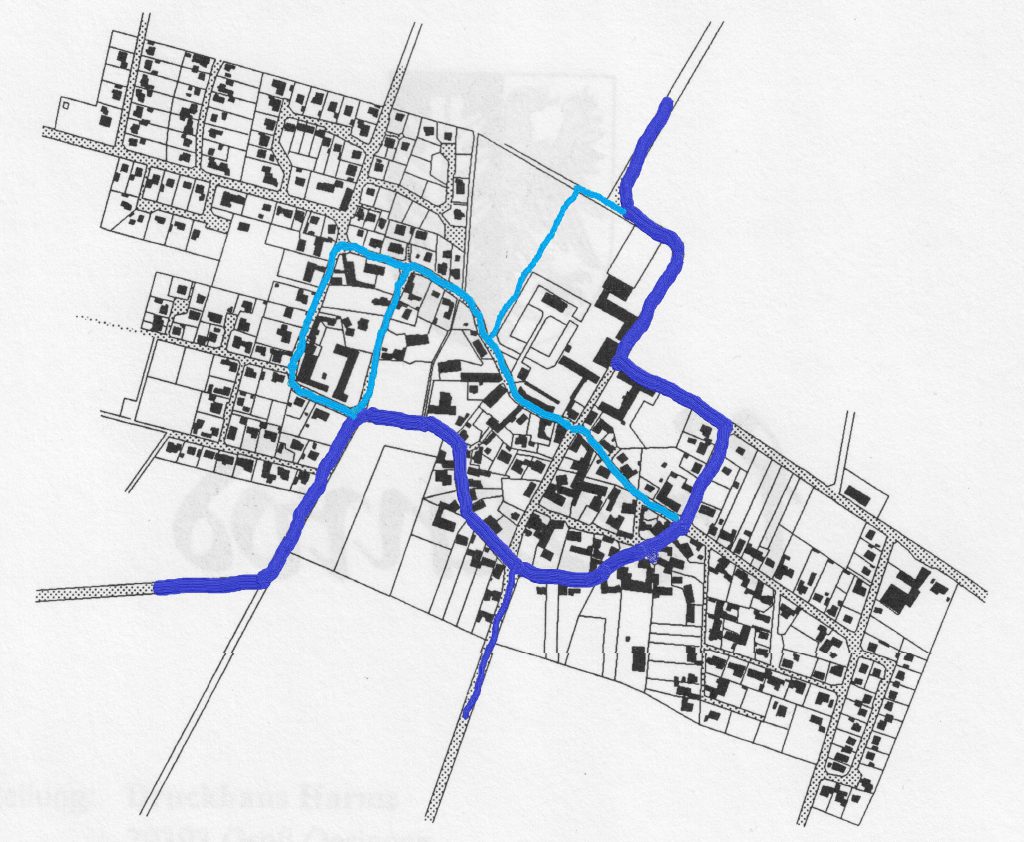
Refuge in Essenrode
The arriving refugees and displaced persons are distributed among the families of the village. This does not happen without resistance from the receiving families, as the community has already taken in almost as many refugees as it has inhabitants. In addition there are bombed-out families from Hamburg and Hanover. For this reason, at times forty-four people have to live with one (!) of the farming families. Eventually, however, everyone gets a roof over their head. With the end of the war the place changes. The prisoners of war working on the farms are freed with the arrival of American soldiers at the beginning of April 1945 and return to their home countries. Many husbands, fathers and sons of families in the village have not yet returned after the war or are prisoners of war. Little by little they find their way to their families in Essenrode. But not all of them return. These belong to the countless dead of a terrible war.
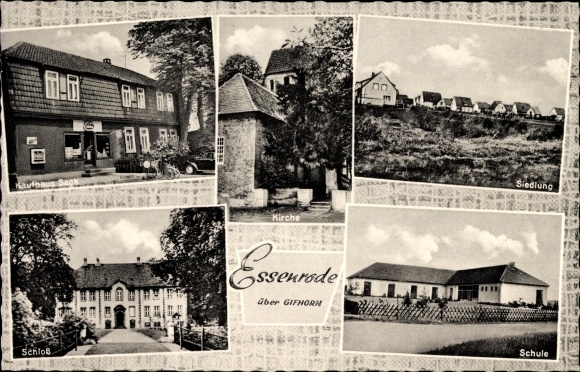
Even decades later, the newcomers still remember their first experiences in the village. They tell of the difficulties, the reserve they were met with, but also of the help and support they received.
But you were always the refugee child in Essenrode. You sometimes felt that you were not from here
If you were a refugee child, then you were already classified by the others. Because they weren’t happy when the refugees came. They had to get closer together.
– From the interviews with contemporary witnesses, Essenrode 2019/2020
Today, if you ask the people who came to Essenrode at the end of the war, their verdict is clear. Even if some of them make a distinction between their home and their homeland, they feel today like Essenrode people and part of this community.
I would not like to miss Essenrode. Essenrode is my home village and it will remain so.
– From the interviews with contemporary witnesses, Essenrode 2019/2020
Confidence in Essenrode
With the new settlers, the villagers of Essenrode great challenges. Housing must be found for the refugees and displaced persons. And it is about uniting the newcomers and the inhabitans of Essenrode community. Life in the village and in its associations is shaped by the “new” togetherness along with greater diversity. Many of the newcomers find work on the farms and the estate. Slowly, a new life is being forged through the collective daily routines and confidence is returning. In addition to working together on the land, people soon begin village life. Newcomers and long-established villagers celebrate together, play sports together, sing in a choir or get involved in the fire brigade and other associations, the church council and other committees.
One festival where young people in particular enjoy themselves and become closer is the annual flag hunt. Flag hunting is an event for the whole village, especially for the youth. It is a competition for young men. They ride horses and have to beat a stick into a hanging little iron ring. The one who does it best gets a wooden flag. This flag is carried in a procession through the village to the winner’s house and is attached to his house. At night the whole village celebrates this in a barn dance.
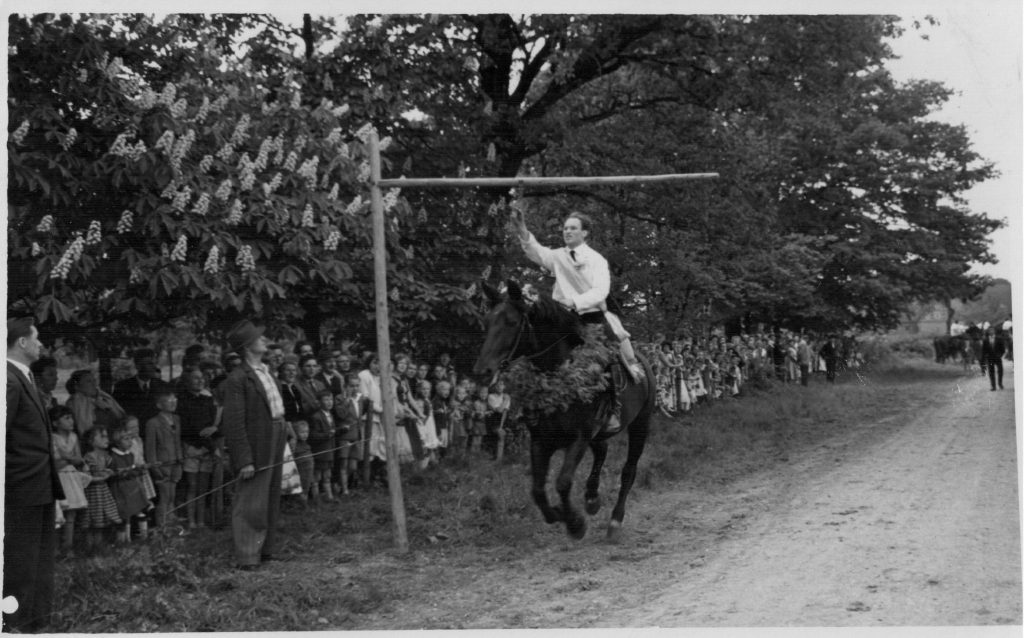
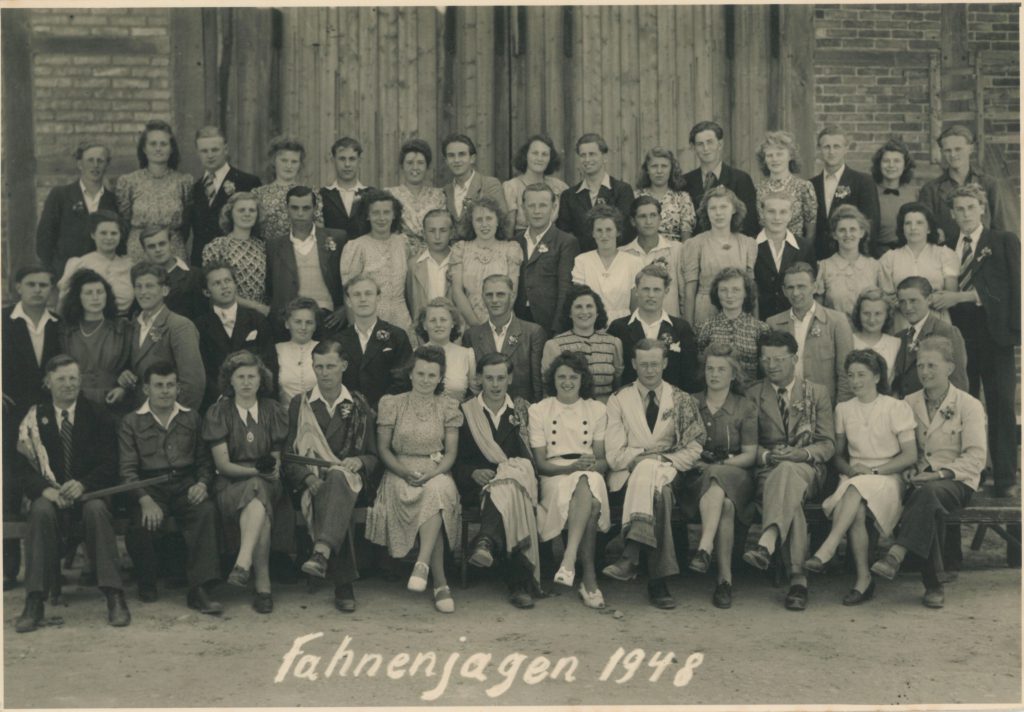
The post-war period is characterized by the desire for enough food and a place to live. There is a silence, however, about one’s own, often traumatizing experiences, during wartime and after the war, these consequence of the Nazi dictatorship and the Holocaust.
“Normality” returned after the war and the period of economic and political uncertainty that followed. And indeed, in 1948, with the currency reform, the German Mark was introduced, and in 1949 the Federal Republic of Germany was founded. The Germans of the Federal Republic were given a new constitution in which human dignity had a special status. A new government with Chancellor Adenauer was formed and Bonn became the new capital of the Federal Republic.
In the fifties, the young Republic experienced enormous economic growth – the so-called economic miracle. This growth also had an impact on the people of Essenrode. Mechanization and industrialization were increasingly taking hold. While mechanization in agriculture was making workers redundant, the Volkswagen plant in Wolfsburg was urgently seeking workers. Many of the young men, and later also women, found well-paid work in the automotive industry.
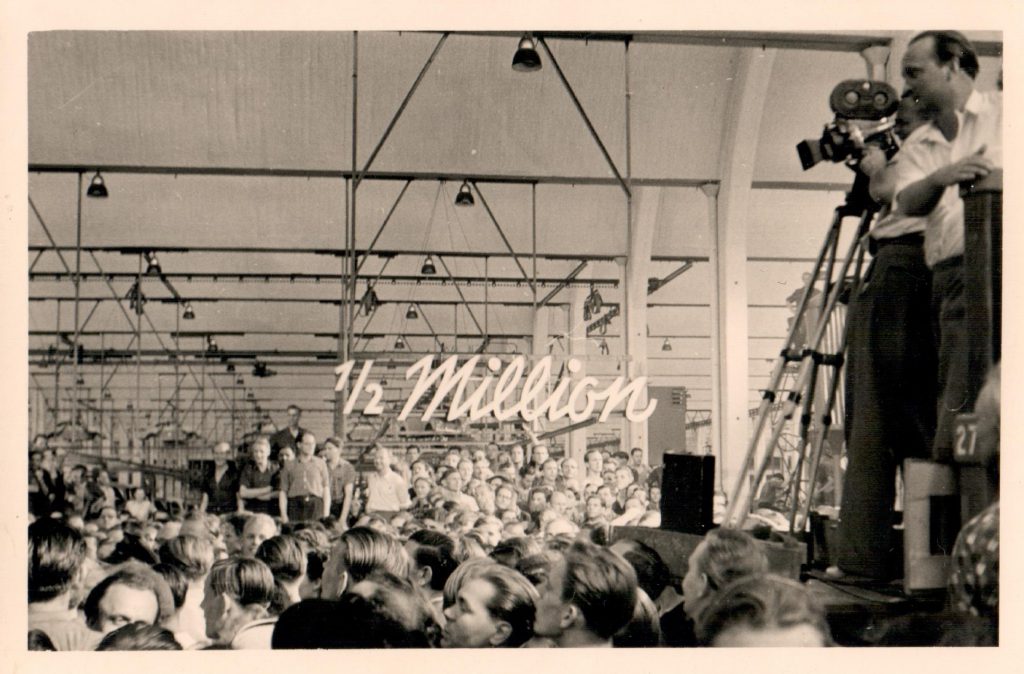
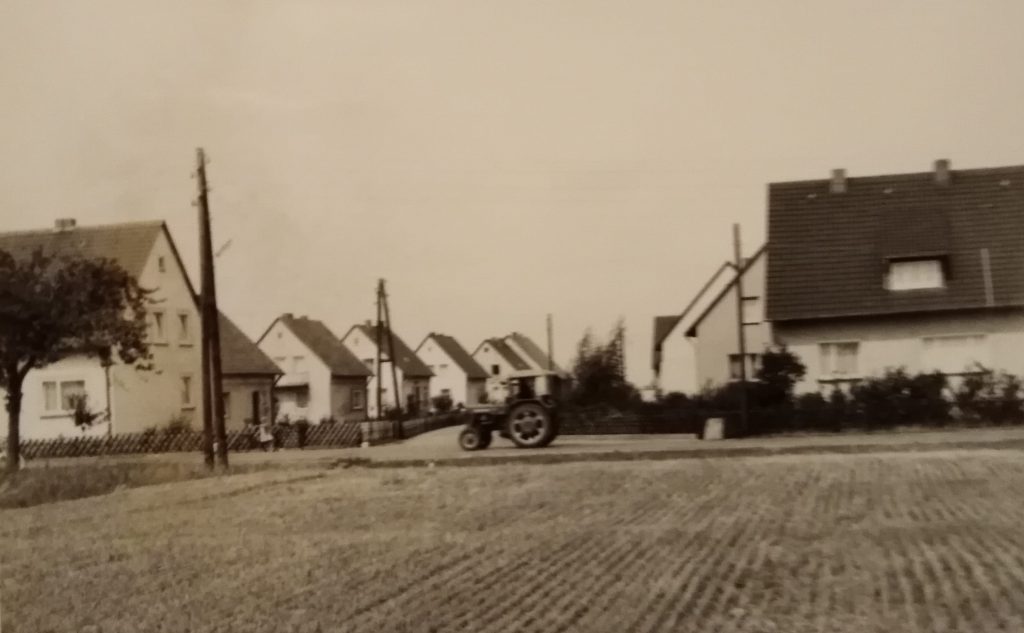
Bit by bit, people been able to affort something. At the end of the 1950s, the first new settlements were built, whose streets bore names indicating the newcomers’ places of origin, e.g. Pommernweg and Schlesierweg. The home, the VW Beetle and the holiday trip became reality.
Future
Today many families still live in Essenrode whose parents, grandparents or great-grandparents arrived there as refugees or displaced persons and found a new home and a new future. Many of these family names are present in the village and its associations and are connected with Essenrode’s history in a special way.
Most of the refugee and displaced families have remained in Essenrode. Their names can still be found there today, because many of their children and grandchildren, and even great-grandchildren, have stayed in Essenrode. They are an integral part of the community.
Today the settlers look back with gratitude. Essenrode has become their new and safe home. It has become a secure base for them, from which they and the coming generations will develop in the world and help to shape the future.
